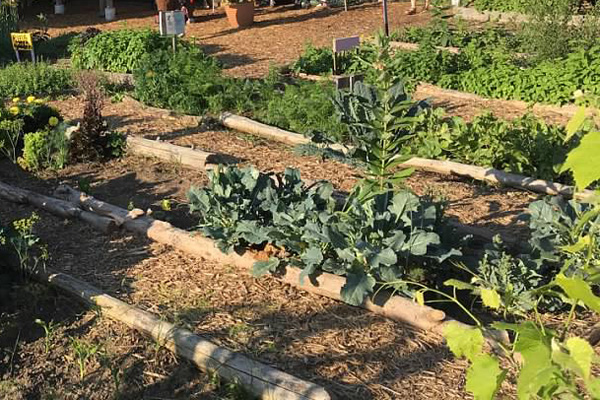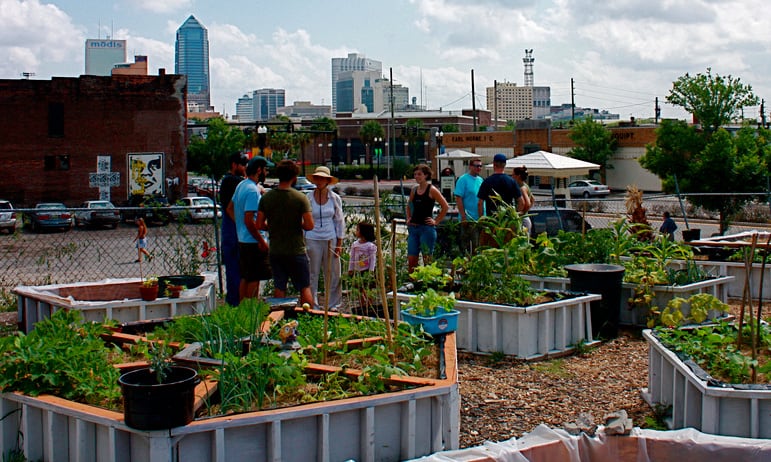The 2-Minute Rule for City Blooming
The 2-Minute Rule for City Blooming
Blog Article
The Ultimate Guide To City Blooming
Table of ContentsThe 2-Minute Rule for City BloomingThe 8-Minute Rule for City Blooming8 Easy Facts About City Blooming DescribedExamine This Report about City BloomingGetting The City Blooming To Work
Fascinated in growing food for sale in the City of Chicago? Below is a list of often asked questions concerning the guidelines and guidelines that cultivators must think about when planning an urban agriculture task.
The zoning modification does not customize any other codes managing composting, building permits, acquiring or renting City had property, company licenses or ecological contamination. There are existing codes that manage these problems and they continue to be in full impact and may be applicable to your job. Area gardens are usually possessed or managed by public entities, civic companies or community-based organizations and preserved by volunteers.
Urban farms expand food that is planned to be sold, either on a nonprofit or for-profit basis. Because of their industrial function, metropolitan farms require a business certificate. Yes. A community garden is enabled to market excess create that was grown on website if the sales are accessory or subordinate to the garden's key purpose described above.
The Buzz on City Blooming
Composting is enabled yet only for plant material that is generated and utilized on site. The amount of garden compost product can not go beyond 25 cubic lawns at any kind of provided time according to the requirements in 7-28-715 of the City's Municipal Code. Yes. Since the soil at most new yard sites requires amending, garden compost, soil, wood chips, or various other products can be acquired to build or boost the expanding room - urban gardening.

If a structure authorization is required after that the hoophouse will certainly be thought about an accessory structure. You can find out even more about the building license needs by getting in touch with the Department of Buildings. The 25,000-square-foot size limit is intended to avoid a solitary neighborhood garden from dominating an offered block or taking away from the block's existing household or industrial character.
The limitation does not put on gardens located in Public Open Area (POS) areas. Can there be more than one neighborhood yard that is 25,000 square feet on a solitary block? Yes. The size limitation relates to private gardens, not to individual blocks. No. Fencing is not required, nonetheless, yards that have big parking lot might be called for to set up secure fencing or various other landscaping attributes.
Not known Facts About City Blooming
B1 & B2 districts call for that all commercial usage activities be carried out inside. R districts limit industrial activity. The regulations mirror the purpose and intent of the Zoning Code. Is secure fencing required for metropolitan farms? Yes. Fences might be called for, together with landscaping and testing, for specific parking lot and outdoor job or storage space locations depending on location and the specific task taking place.
Urban ranches from this source need structure permits and zoning approvals prior to building and construction (home and garden). Various other forms of city testimonial might be required depending on particular frameworks, activities, size, landscaping, licensing, public heath and stormwater administration issues.
Yes. The kind of permit is established by what is happening at the website. The Department of Service Affairs and Customer Protection can aid figure out the details sort of company permit that's required. Yes. Off road car park is required for most industrial projects in Chicago. The needed number of garage is based on the number of staff members working on site and not the square video of the growing area.
Examine This Report about City Blooming

An urban ranch can market compost material produced on website, nonetheless, the operation should conform with the guidelines in 7-28-715 of the Chicago Municipal Code. Aquaponic systems are allowed indoors on urban farms in lots of zoning districts.
Up to five hives or nests of honey might be kept as an accessory usage. However, beekeepers need to sign up with the Illinois Division of Agriculture. To learn more about the recommended zoning change you may get in touch with the Division of Housing and Economic Advancement, Bureau of Planning and Zoning at 312.744.8563.
Farming in cities and metropolitan areas An urban ranch in Chicago. Urban agriculture refers to different techniques of cultivating. https://soundcloud.com/cityblooming, handling, and distributing food in urban areas. The term additionally applies to the location activities of pet husbandry, aquaculture, beekeeping, and gardening in a city context. Urban farming is identified from peri-urban agriculture, which happens in backwoods at the side of suburban areas.
Little Known Facts About City Blooming.
It can involve a motion of organic growers, "foodies" and "locavores", that seek to create social networks based on a common values of nature and community holism. These networks can develop by way of formal institutional assistance, ending up being integrated right into regional community preparation as a "transition community" activity for lasting urban growth.
Some of the initial evidence of city farming comes from Mesopotamia.
Report this page